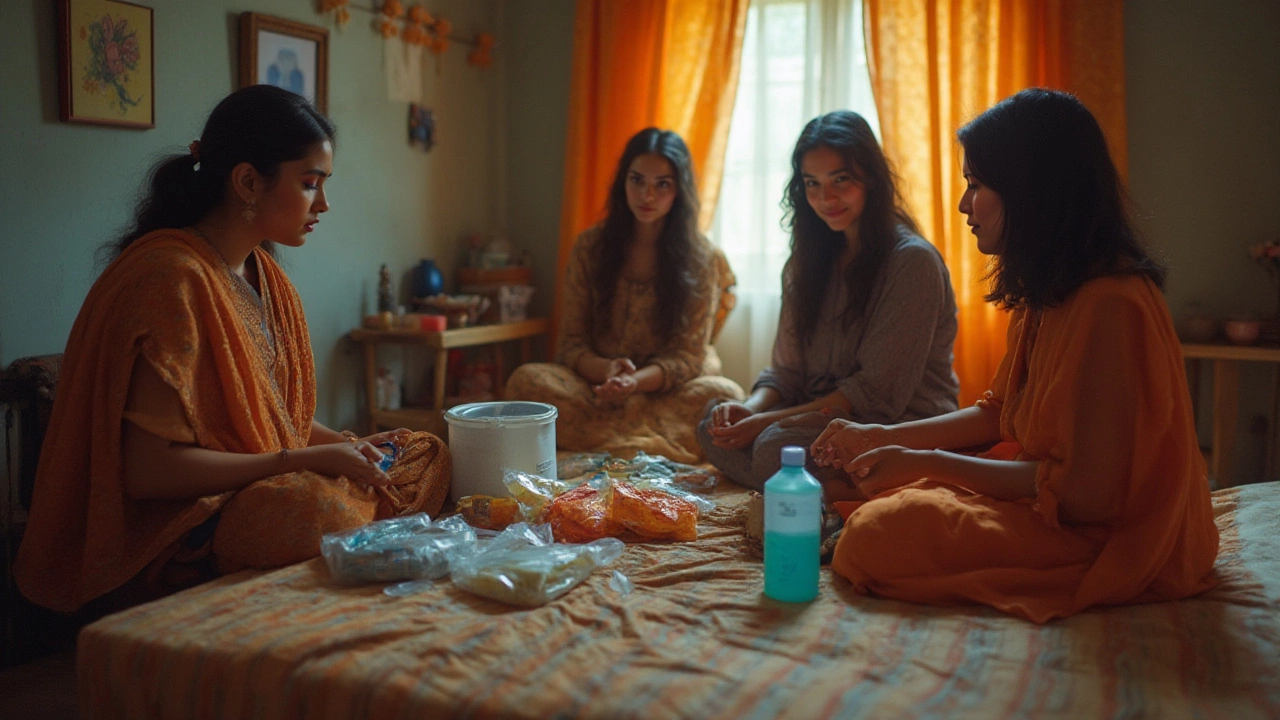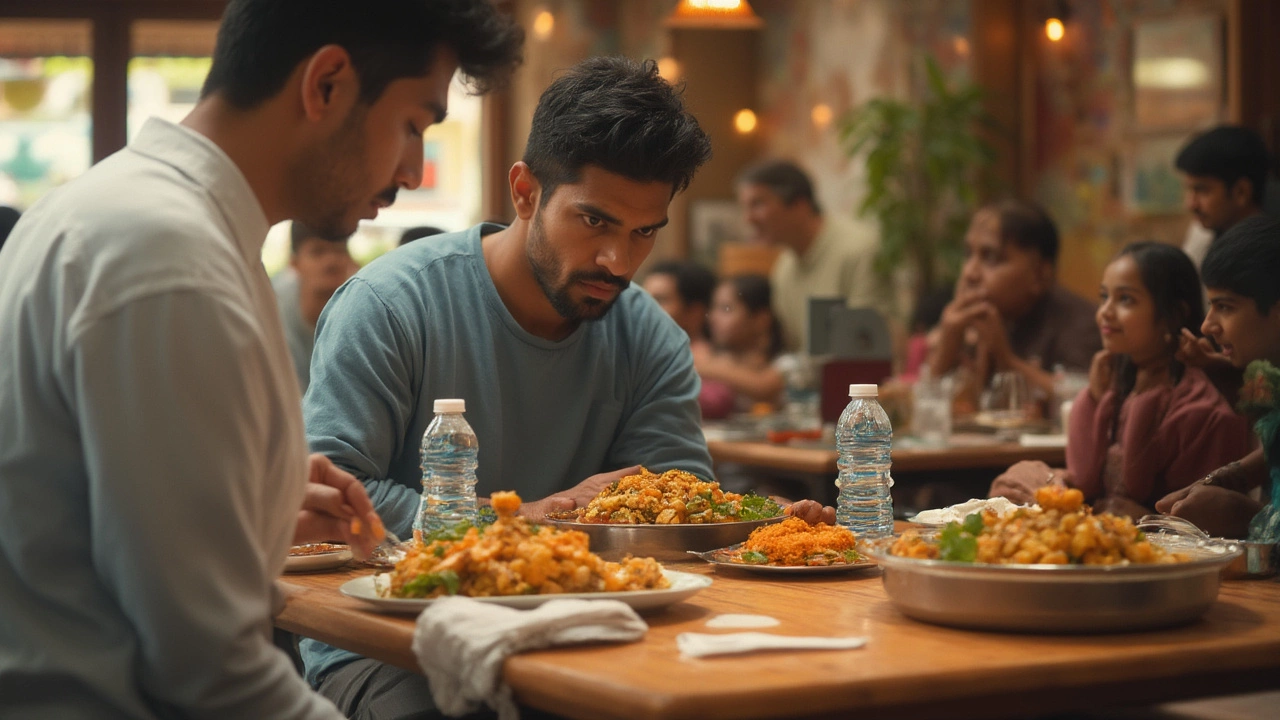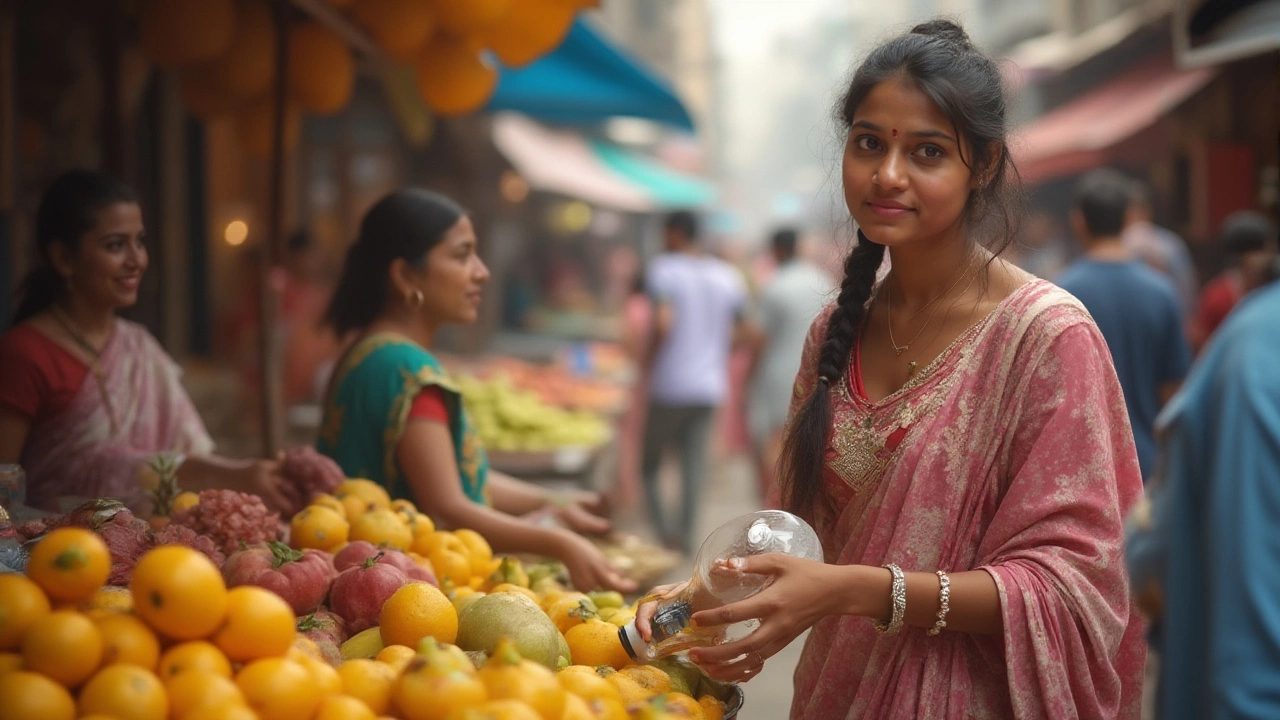Picture this: you finally landed in India. The smells from a street-side food stall pull you closer—spices, frying oils, that undeniable whiff of adventure. Then you remember the horror stories: fierce stomach cramps, awkward runs to the bathroom, or being stuck in bed with traveler’s diarrhea just as the trip’s getting good. You’re not alone—over 30% of travelers to India get hit by this bug. But here's the real deal: you don’t have to become a statistic. With a bit of street smarts, those spice-laden samosas and vibrant mango lassis can be totally within reach, minus the misery.
Understanding Traveler's Diarrhea: Why India Gets the Rap
Traveler’s diarrhea isn’t just an “India thing”—but the country’s climate, bustling cities, and incredible variety of street food absolutely crank the risk up. Most often, diarrhea happens when your gut gets ambushed by unfamiliar bacteria, usually E. coli, but also by Salmonella, Shigella, or even viruses and parasites like Giardia. These bugs thrive in warm, humid places, and India’s summer temperatures often hover above 35°C (95°F), which bacteria love even more than you love masala chai.
Now, raw veggies rinsed in tap water, unrefrigerated foods, or that tempting pani puri from a cart can all turn into a gamble. Even a drop of contaminated water in a salad or a few ice cubes in your drink can set off the trouble. About 60–70% of traveler's diarrhea cases come from food, with the rest mostly linked to water. The Delhi Belly cliché isn’t without reason—in 2023, a study by the All India Institute of Medical Sciences (AIIMS) tracked 400 tourists and found that almost half developed symptoms within the first five days of arrival. The first signal? Sudden loose stools, sometimes followed by cramps, fever, or nausea. Luckily, traveler’s diarrhea is usually short-lived (two to four days), but that can still wreck plans fast.
It isn’t about India being “unclean,” but about differences in gut bacteria—yours just isn’t used to what’s considered normal here. Local friends probably munch on street snacks without a second thought because their guts have built antibodies you don’t have yet. So, preventing diarrhea while traveling in India is more about being prepared and alert, not paranoid. Once you know how these bacteria operate, you can actually navigate food like a pro.
Water Wisdom: How to Drink Smart and Stay Safe
Contaminated water is the biggest culprit behind traveler's diarrhea in India. The tricky part? Bacteria and parasites are invisible, and even the fanciest hotels sometimes cut corners. Never forget: clear water isn’t always clean water.
Step one—don’t drink tap water. This includes rinsing your toothbrush, washing fruit, or even washing your face with the idea that “a little won’t hurt.” It might. If you’re thirsty, opt for sealed, commercial bottled water. Always break the seal yourself; sometimes, bottles are refilled with tap water by shady vendors. In 2024, the Indian government cracked down on counterfeit water bottles, but you can never be too sure, especially in local markets. If you can’t get bottled water, boiling for at least one minute works wonders. Tiny portable water purifiers or iodine drops help when you’re off grid, but nothing beats a sturdy LifeStraw bottle for day trips.
Ice? Skip it unless you see it’s made from commercial water. That Instagrammable glass of lemon soda at a hill station might be calling your name, but if they plunk in mystery ice cubes, just say no—many hotels and roadside dhabas buy block ice that started as tap water. You’re better off with hot drinks, which are boiled. Chai and coffee are generally safe, especially when served steaming.
Another sneaky issue is salads. Lettuce, tomatoes, and other uncooked veggies are usually washed with local water. While you might crave something fresh, stick to fruits you can peel yourself—bananas, oranges, mangos. Watch servers as they prepare your order when possible. If someone dunks your glass in a grimy tub before filling it, maybe skip the drink altogether.
Hand hygiene also matters. Always carry a small bottle of alcohol-based hand sanitizer, and use it before touching water bottles, snacks, or your face. Many people get sick not from the meal, but from their own hands after grabbing rupees or leaning on handrails. It's wild but true: something as simple as scrubbing your hands can halve your odds of getting sick.

Eat Without Fear: Street Food Survival Guide
The real adventure of eating in India is the food scene—chaats, dosas, samosas, coconut water straight from the source. You don’t have to sit out and watch, you just need a set of practical rules to make sure your taste buds celebrate, not revolt.
First rule: hot food, freshly cooked. Watch out for anything that’s been sitting around; heat kills bacteria, but lukewarm or room-temperature food is like a five-star hotel for bugs. Crowd logic helps too—join the stalls where locals queue up. A long line means faster turnover and fresher food, not to mention a stamp of approval from folks who eat there daily. If you see half-empty bowls or crusty edges on food, walk on by.
Veg or non-veg? Meat is generally riskier. If you can’t resist, choose spots with high volume and visible cooking. That sizzling tandoor or deep fryer is your friend—it’s cooking germs into oblivion. Avoid seafood unless you’re on the coast, like Goa or Kerala, where catch-of-the-day turnover is super high. In the cities, stick to vegetarian fare—India does this better than almost anywhere else in the world, and plant-based meals have a lower risk for foodborne trouble.
Avoid raw chutneys and yogurt that sits unrefrigerated. However, packed branded yogurts from reputable shops are safe—they add a probiotic punch that can actually help your gut. Coconut water from green coconuts gets a thumbs up, but wipe off the outer shell before drinking if you can, and watch out for dirty straws reused by street vendors.
- Pick stalls with a crowd, freshly made food, and clean cooking gear.
- Go vegetarian or vegan if you’re unsure about meat freshness.
- Say no to salads and raw garnishes—enjoy peelable fruit instead.
- Have a backup snack in your bag, just in case you can’t find a clean spot when hunger hits.
- Stay hydrated, but do it right: bottle, boil, or purify water.
Trust your senses—if something smells off or looks sketchy, don’t risk it, no matter how hungry you are. The temptation to try everything on day one is real, but spreading your food adventures out helps your gut adjust gradually to new spices and bacteria, lowering your chances of trouble.
Practical Packing: What to Bring for a Smooth Trip
Packing the right stuff could be what stands between you and a vacation spent desperately searching for clean washrooms. The essentials are not just about comfort, but insurance against days lost to bed or bathroom breaks.
Start with rehydration salts—ORS packets are available at any pharmacy in India but bring a few from home if you want familiar flavors. Diarrhea can dehydrate you rapidly, especially in Indian heat. Oral rehydration solution can save your energy and speed recovery. Next, pack medications: loperamide (Imodium) stops things quickly for times when you just can’t stay by a toilet (think bus rides or day trips), but don’t use it if you have a fever or blood in your stool. That’s when you need to see a doctor, fast.
Bring antibiotics prescribed by your doctor if you want extra reassurance; ciprofloxacin, azithromycin, or rifaximin are common choices, but only take them if you’re in bad shape or running a high fever. Most cases get better with time, rest, and rehydration, but severe symptoms are worth treating seriously.
Hand sanitizer is your MVP. Wet wipes help when bathrooms run out of soap or toilet paper—never a guarantee in India. Travel-sized disinfectant sprays work for toilet seats, door handles, or questionable surfaces. Don’t forget a reusable water bottle with a built-in filter, like LifeStraw or Grayl; they’re handy when bottled water supply is sketchy. Stock a few familiar snacks like granola bars or nuts for those moments when you can’t find anything safe to eat and your stomach is growling.
A basic thermometer is smart for checking if a mild fever has turned into something worth worrying about. And probiotics? They’re not magic, but taking them before and during your trip may strengthen your gut’s immune defenses. In 2023, the Journal of Travel Medicine published a genuinely helpful study showing that travelers using regular probiotics (with at least 1 billion CFUs of Lactobacillus or Bifidobacterium) cut their diarrhea risk by around 30%. Worth a try, especially if you’ve had issues in the past.

Local Know-How: Gut Instincts, Cultural Customs, and How to Get Help
Blending in with local habits is half the fun, and it could actually help keep you healthy. Notice how, in India, most people eat with their right hand and never their left? That’s not just custom; the left is considered “unclean”, which cuts the risk of transferring bacteria from unhygienic surfaces. Observing and following these habits keeps you safer.
Many Indians kick off meals with a squeeze of lime or a pinch of raw onion—lime juice has mild antimicrobial properties, which helps a bit. Spices like ginger, turmeric, and garlic, used in abundance, are also known for their natural antibacterial action. Don’t count on them as a force field, but every little bit stacks the odds in your favor.
If you start to feel off—say, rumbling guts or mild cramps—don’t ignore early signs. Slow down on adventurous foods, drink extra fluids (safely!), and get extra rest. Mild symptoms often pass in a day or so. Severe stomach pain, bloody stool, or high fever shouldn’t be ‘toughed out’—get medical attention fast. Major cities like Delhi, Mumbai, and Bengaluru have solid hospitals and English-speaking doctors, plus pharmacies on practically every corner. Most basic hotels can connect you with a doctor if you ask.
If you’re worried about costs, travel insurance can pay for decent care in private hospitals. Even small clinics will help for minor issues but head to a big hospital if things get serious. And never be embarrassed to ask questions—locals are often eager to help if you’re polite and honest about what’s bothering you. Carry a small translated card (or an app) that explains your symptoms if you’re not sure about the language barrier; it makes things run smoother during emergencies.
Most travelers are pleasantly surprised by the warmth and quick help from locals—they know the drill. And after you bounce back? Go easy for a while: stick to bread, rice, bananas, and yogurt for a day or two before diving back into rich curries and fried treats.
India’s culinary world is wild, captivating, and—yes—a little tricky at first, but all worth it. You can eat, drink, and explore without fear; just keep your eyes open, your sanitizer handy, and these tips tucked in your bag. The myth of inevitable ‘Delhi Belly’ is just that—a myth, if you go smart and prepared.
